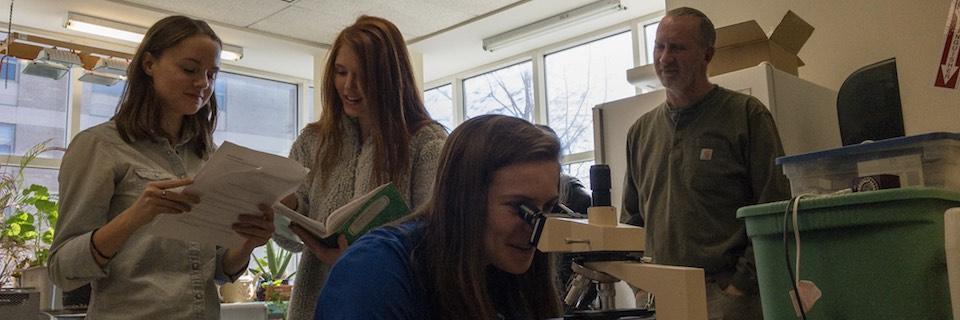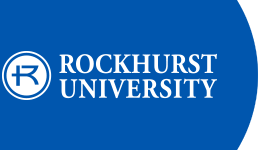To Learn What’s Living in the Trees, RU Students Read the Leaves

The study of the role our unique microbiomes play in human health has become an emerging field in biology over the last several years.
But humans aren’t the only ones with microbial “fingerprints” that play a part in their everyday functioning — plants and trees are also rich with a diverse array of unseen bacteria that play different roles in the ecosystem. And one group of Rockhurst University students, for the last two years, has tried to understand that invisible world a little better.
Last year, some of those students and their faculty mentor, Chad Scholes, Ph.D., associate professor of biology, presented the initial findings of several years of research at the Missouri Academy of Sciences annual meeting in 2017 in St. Charles, Missouri.
“We really wanted to look at what grows on leaves locally,” said junior biology major David Nguyen.
Raymond Cheung, a senior biology major, said the project built on previous efforts by his brother to use natural tannins to help catalog what’s known as the phyllosphere.
With that foundation, the students started to collect specimens from different trees, carefully building cultures from each one in an attempt to identify as many different strains of bacteria as possible.
Scholes said the students collected specimens on Rockhurst’s own campus and then in Kansas City’s sprawling Swope Park. They were looking for what made each tree, or each area, unique, hoping to find something new.
“It’s something that not that many people know about — it’s a wide open area, because even though there turns out to have been quite a bit of research on it, there’s not a lot about Missouri and tree species here,” he said.
The opportunity to be a part of a project in a relatively new area of scientific research lent a bit of excitement to the experiment for Olivia Rode, a sophomore biology major who joined the project this year.
“I think I typed the word ‘phyllosphere’ and spellcheck didn’t even recognize it,” she said.
Rode said she was also drawn in by the opportunity to discover something new about the places she spends so much of her time. Audrey Habron, a junior biology major, said she had a longtime fascination with plant biology.
“I’m interested in this as a career path — I love plants — so this was a way to see if it was something I want to do,” she said. “As soon as I heard about this, I knew I wanted to be a part of it.”
Once they collected samples from different trees, they would bring them back to the lab, where the students would isolate as many different strains of bacteria as they could and catalog their findings. At first, the students used an older testing and culture method. But Scholes said this year, they’ve changed their approach.
“We‘re isolating the DNA of each bacteria and sending them off to be sequenced, which is a lot more reliable, and it’s also more in tune with the way that others conduct similar research,” he said.
Walking through the woods to collect different specimens has its charms, but the students who worked on the project say the lab work was rewarding as well, because it gave them an idea of what working in a professional lab is like.
“In other class labs, you have to follow procedure, and you don’t have the ability to adapt to the situation,” Cheung said. “In research, you face problems and you have to figure out a solution.”
Add to that the thrill of discovery. The team, which also included sophomore biology major Mary Strecker, would send off batches of isolated samples, the DNA of which was sequenced by an outside lab, which then provided identities for the strains of bacteria the team had isolated. Some bacteria identified were fairly common, others not so much. The results frequently inspired more questions.
“There were some that were common pathogens or commonly found on trees, and there were others that we had never heard of before, and had only been found in some strange places that had nothing to do with trees,” Scholes said. “One of the questions that we were curious about is, on a college campus where we have people walking around all the time, are we going to find bacteria that we associate with people growing on a plant leaf?”
So far, they haven’t. But the students said they will carry on the project, isolating and getting new specimens sequenced in the hopes of making new observations between different types of trees, different types of ecosystems, and how the living things within those ecosystems interact with each other.







